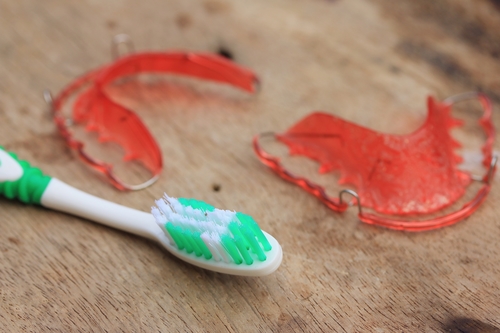
If you’ve just gotten your braces off, you’re probably eager to have wire-free teeth. But if you blow off your retainers, you’re going to lose the straight smile that you worked so hard for – and that’s the last thing we want.
Fortunately, getting accustomed to your retainers is usually much quicker and easier than the adjustment period you had with your new braces. All you need to do is wear them as instructed, and you’ll find yourself forgetting they were once uncomfortable or strange – and thinking of them as part of your daily routine.
We’ve put together our tips on what you can do to treat your retainers properly – check out our tips below, and get in touch if we don’t answer any of your questions.
Retainers are Temporary, Right?
Not necessarily. Granted, you will only need to wear your retainers around the clock for a set period after you get your braces off. After that, you will graduate to wearing your retainer only at night. But some patients should wear retainers for the rest of their life if they want to keep their smile in place – more details on that in the next section.
Why all the retainer time? Because your teeth need help settling into their new positions. It takes time for your bone and the tissues that surround your teeth to become accustomed to the new alignment of your bite. The retainers help everything stabilize. The first month after braces is an especially crucial time, and without retainers, you run the risk of relapse.
Your retention period will be unique to your case. Typically, retainers are worn for the same length of time as you had braces. Your retainers are designed to fit your new smile and hold your teeth in place. They may be removable, or fixed. If you only had braces on your upper or lower teeth, you may just have one retainer.
Fixed Retainers vs. Removable Retainers
There are two main types of retainers:
- Removable – These are fully removable and you can easily pop them out before you eat or brush and floss your teeth. These will typically need to be worn full-time for a period after braces, and then only worn at night once your orthodontist permits. Be sure to keep your follow-up appointments so that Dr. Thomas can track your progress and let you know when you’ve spent enough time in full-time retainers.
- Fixed – These are wire bars that are permanently attached to the tongue-facing side of your teeth. Fixed retainers are most often provided for lower teeth, and may stay in place for many years.
What if Your Retainers Don’t Fit Anymore?
If you’re an adult and your teeth have shifted, you may not be able to put your retainers back on your teeth. Teeth could have shifted enough that you will need new retainers made, or may even need orthodontic treatment again.
Your teeth will always strain to return to their original positions. There is a likelihood of shifting after you stop wearing your retainer, depending on how much time has passed since braces. There is also a component of aging that causes teeth to continue to push forward up until about 50 years of age. This can lead to the lower front teeth shifting and crowding.
This shifting is one reason why retainers, especially for the lower teeth, are prudent to wear for years.
If your retainers no longer fit, check in with the orthodontist who provided them so that you can determine next steps – your orthodontist knows your case best.
Proper Care for Your Retainers
As soon as you start wearing retainers, there are a few care steps you’ll need to follow. Instructions will be slightly different depending on whether your retainer is removable or fixed.
- Caring for a removable retainer – It will take a little time for you to get accustomed to speaking with this retainer, since it has a plate spanning the roof of your mouth – just practice speaking out loud on your own and you’ll be comfortable in no time. Clean your retainer daily by brushing it gently with a soft-bristled brush and a small amount of toothpaste. Be sure to be careful when brushing the delicate wires. Bring your retainer case with you wherever you go – the number one problem patients have with retainers is losing them. Don’t put your retainers in a napkin or tissue while eating, because it’s highly likely they will get thrown out by mistake. Pets also love chewing on retainers, so keep them out of reach of your furry friends. Take out your removable retainer when you are eating, playing contact sports, or brushing your teeth – and put them back in as soon as possible.
- Caring for a fixed retainer – Since this retainer remains in place, you’ll need some professional help to keep it clean and keep your teeth healthy. Schedule regular exams (every 6 months) with your dentist so that they can take x-rays and check for cavities. The bar against your teeth can trap food and encourage the growth of plaque. When cleaning your teeth, use a floss threader to reach behind the wire and access your gums. You should also avoid chewing on anything with your front teeth that might pull the retainer wire loose or break it.





